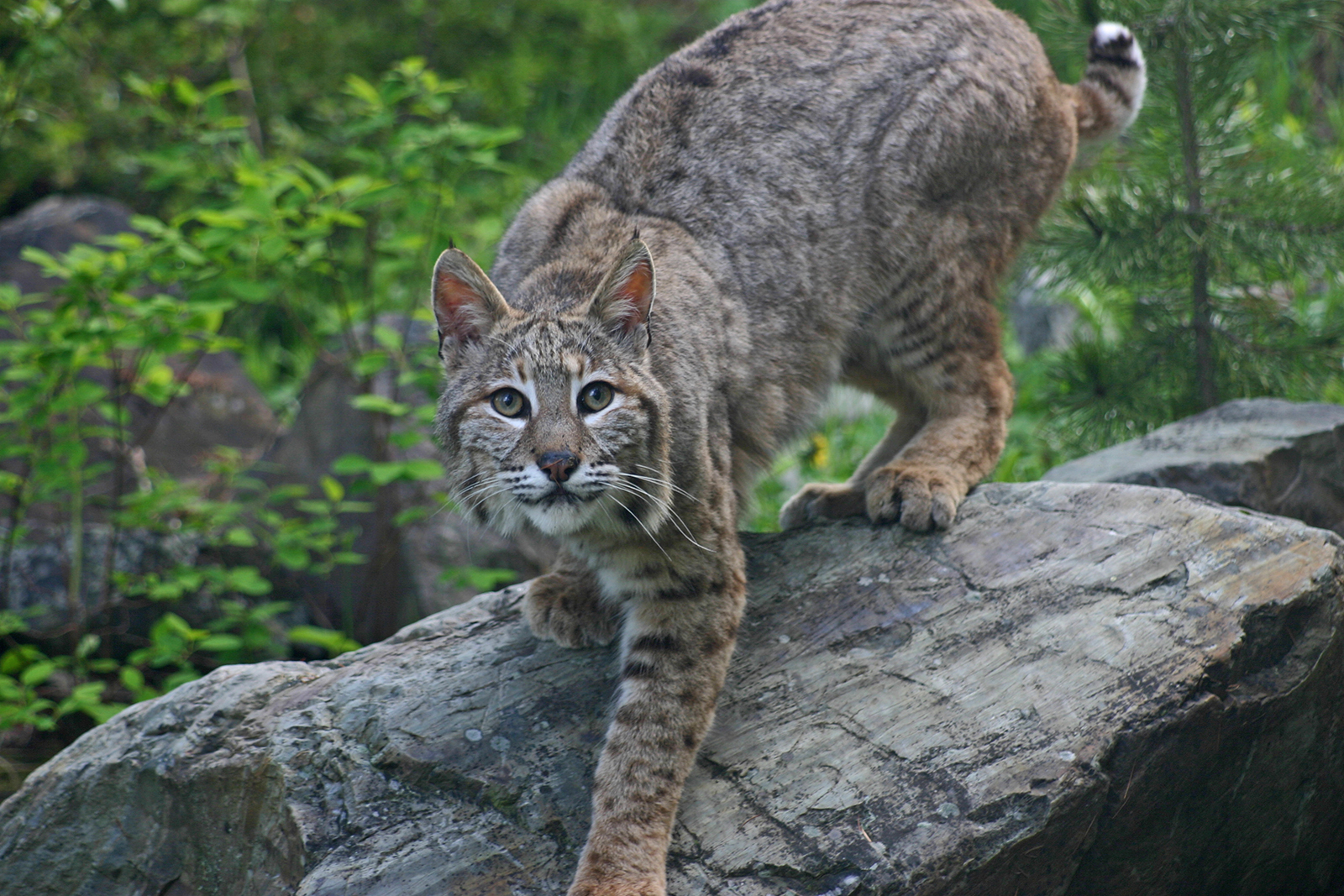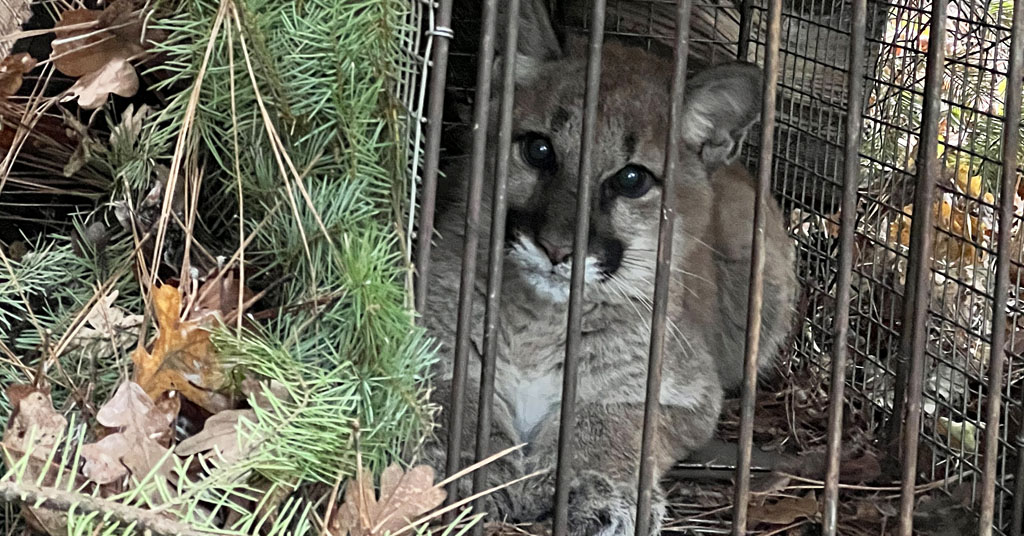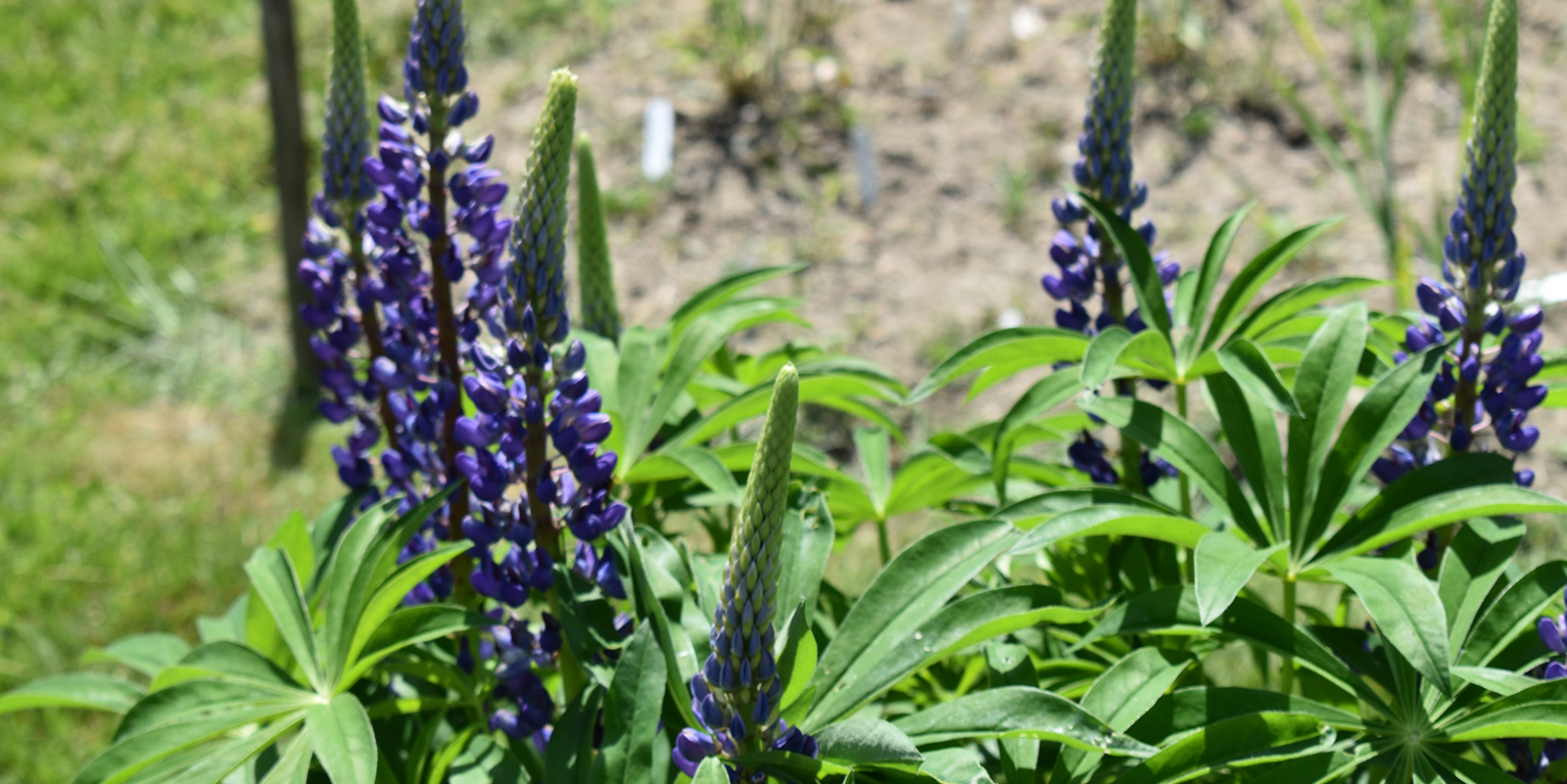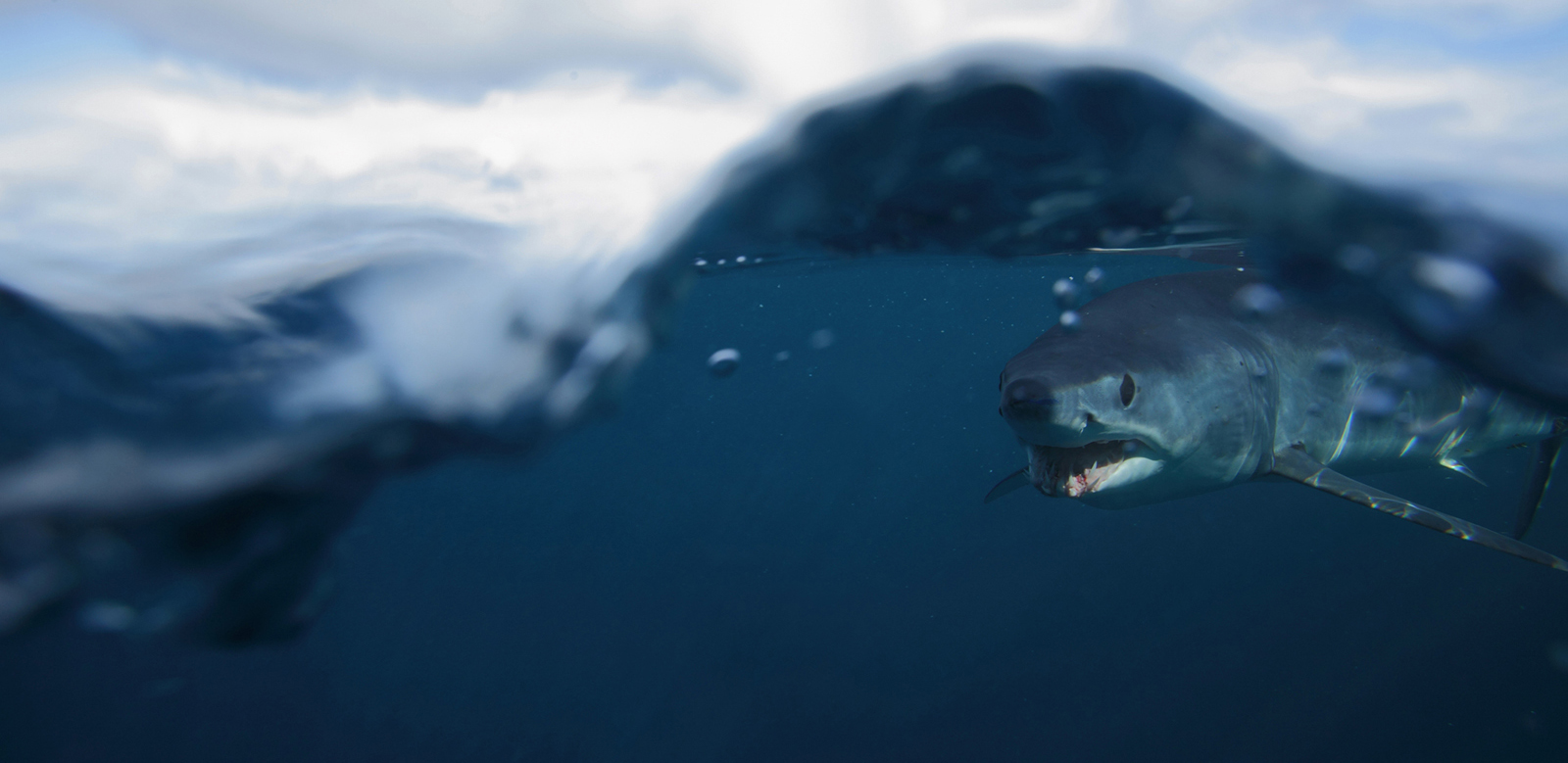Compared to Its Neighbors, R.I.’s Rare Species Lack Protection
August 10, 2022
Endangered species laws vary from state to state, and Rhode Island laws lack some protections that have been codified by its New England neighbors.
“The regulatory frameworks that currently exist for protecting wildlife in Rhode Island are inadequate,” according to the state’s Community Wildlife Conservation Guide.
Despite the differences in the laws and lack of protection, there are still ways the Rhode Island Department of Environmental Management (DEM) tries to fill in the gaps at the local level, and some federal funding could be on the horizon to increase what can be done.
Identifying and protecting rare species
Before rare species can be protected, the state must decide which species are of greatest concern and find where they are living.
The Rhode Island Natural History Survey (RINHS) is a nonprofit that tracks rare species in the state in collaboration with DEM and helps to create the official Natural Heritage lists, for both plants and animals, which are protected under state endangered species law.
DEM used to have its own in-house Natural Heritage Program, but RINHS took it over in 2007 when DEM’s program staff retired and weren’t replaced.
David Gregg, executive director of RINHS, said the information the staff is gathering includes where a species was found (latitude, longitude, and municipality), who found it, and what conditions it was in (sick or healthy). That information then goes into a spreadsheet database.
“That’s bare minimum,” Gregg said. “An Excel sheet is not a good way to operate a database of anything.”
With more funding, possibly from the Recovering America’s Wildlife Act of 2021, RINHS and DEM could keep more data and create better internal and external systems for displaying and searching that data, he said.
RINHS is already working on creating an internal “relational database where you can ask complicated queries and you can limit things by date or by latitude, longitude, you can do all kinds of things,” said Gregg, regardless if funding through DEM comes through.
Amanda Freitas, DEM’s Rhode Island Wildlife Action Plan community liaison whose work is a collaborative project between the department and RINHS, said if further funding comes in, she would also like to update the rare species lists. The last time the plant list was updated was 2015; the animal list hasn’t been updated since 2006.
In addition to the list of species, there is also a map of National Heritage Areas, which is available on the Rhode Island Geographic Information System. This map does not show which rare species are in a particular area, it only alerts someone to the general presence of an animal that is considered rare, to protect highly valuable rare species from poachers and collectors.
When a conservation group or another nonprofit needs information about rare species and where they are, they can call RINHS to get that information.
Any individual or business who needs information about rare species locations for regulatory, commercial, or permitting purposes must contact DEM. Typically it is a geographic information system (GIS) specialist who handles those requests, and it does not usually come with a “biological opinion” or advice on how to conserve or minimize harm to the state-listed wildlife that may be present near the project.
The department “doesn’t have dedicated staff or resources to be able to issue biological opinions for all requests,” according to Freitas, though often she or other DEM staff will “try to corral comments from the appropriate biologists and get those to them, but not in a regulatory capacity.”
Freitas noted those opinions are “information-sharing and advisory only and don’t constitute any part of the permitting process.”
Additionally, for projects that involve the Rhode Island Department of Transportation, RIDOT’s Natural Resources Unit consults “informally” with DEM’s Division of Fish and Wildlife “to minimize impacts to the greatest extent practicable,” according to Freitas.

Neighboring rare species laws
Other states’ environmental agencies have rules that prevent the “taking” of rare or endangered animals and plants and use permitting to diminish the harm that comes to those animals when new developments encroach on their habitat.
To “take” an animal, according to Massachusetts law, means “to harass, harm, pursue, hunt, shoot, hound, kill, trap, capture, collect, process, disrupt the nesting, breeding, feeding or migratory activity or attempt to engage in any such conduct.”
Rhode Island law does not mention “take” in these terms. While it’s unlawful to physically take an endangered species and keep it as a pet or sell it, if a new development could impact the animal’s habitat leading to a “take,” the state’s regulatory oversight is weaker unless it is within a designated wetland.
The regulations within Rhode Island’s Freshwater Wetlands Act “do address rare species and rare wetland types, but these regulations only apply within jurisdictional wetlands and fall short of disallowing significant impacts to rare species even within this jurisdiction,” according to the 61-page Community Wildlife Conservation Guide.
The Freshwater Wetlands Act, changed as of July 1, has a “little bit more teeth to it than it ever has yet, in terms of development,” Freitas said.
In addition to the definitions and prohibition of most takings, a Massachusetts Endangered Species Act project review is triggered when a development occurs within a rare species habitat. If the review finds a project will result in a “take” of state-listed species, the project must apply for a conservation and management permit, which proves the project “avoided, minimized and mitigated impacts” to state-listed species.
Rhode Island does not have these priority zones, and instead just has Natural Heritage polygons, which is a “much more simplistic way to buffer and obscure the point data,” according to Freitas. “Priority habitats, or something like them, are among the tools we’re considering now as we try to prioritize improvements in how we approach Natural Heritage species.”
Connecticut also allows “incidental takings permits” for projects that involve the state or federal governments and “may cause an adverse impact on a Threatened or Endangered species,” according to ecologist and environmental consultant Anthony Zemba.
“Mitigation for the impact is required under this process,” he wrote in an email to ecoRI News, noting that such an effort could include transplanting or relocating state-listed species, acquiring more conservation land, and/or scaling down the project.
During the hearings for the proposed fossil fuel power plant in Burrillville, Zemba testified to how Rhode Island lacked these protections.
Bill Eccleston, a North Providence resident and a retired Burrillville teacher who grew up in the northwest Rhode Island town, was a vocal opponent of the power plant and watched the hearings closely. He recently told ecoRI News that the work of the both DEM and RINHS “is in vain without a uniform procedure baked into the land-use decision-making processes of every planning board in the state.”
“As Connecticut and Massachusetts have done, we must recognize that land acquisition alone, whether by land trust or DEM, is not going to save our threatened species,” he said.
According to the Community Wildlife Conservation Guide, besides wetlands animals, migratory birds, and other endangered federal “trust” species, “there is little regulatory authority to protect most other wildlife species” in Rhode Island.
The only permit the Division of Fish and Wildlife issues for rare species are for scientific collectors permits. Some other offices within DEM do make projects review their impacts on rare species during the permitting process, but only under certain circumstances.
The Office of Water Resources, for example, issues permits for potential alterations to wetlands and buffers and “considers impacts to the ability of those freshwater wetlands or buffers to support rare species,” according to Freitas.
Rhode Island Pollutant Discharge Elimination System (RIPDES) permits also require applicants find out whether they are building on or will discharge into an area that could impact rare species. If so, applicants must design their project to avoid any impact.

Protection from bulldozers needed
There isn’t currently a movement or proposal to give the state regulatory control like in Massachusetts or create a permitting process like in Connecticut, but some experts said the laws could be improved through an array of changes.
“We wish there were better protections for rare and endangered species … of course,” said Larry Taft, executive director of the Audubon Society of Rhode Island. “But how do you do it?”
Taft said 2018’s Rhode Island Forest Conservation Act was a step in the right direction, but he noted it could benefit Rhode Island to give municipal conservation commissions more regulatory power, like in Massachusetts, so issues don’t have to be taken up by state agencies as frequently.
Although he admitted he is not a policy creator, Gregg acknowledged Rhode Island’s lack of certain protections.
“If you’re buying and selling rare species, there’s probably a law against it,” he said. “But in terms of bulldozing it … I don’t think there are many protections.”
But specific habitat protections only go so far, Gregg added. For animals that come back to the same areas year after year, laws like those in Massachusetts can keep wildlife safe, while animals that have huge areas where they roam are only really protected by widespread conservation of a type of habitat.
Gregg said more funding to collect more data to know which places are the most important to conserve would go a long way in protecting species.
“A lot of plants and animals have been extirpated from the state,” said Rick Enser, who ran DEM’s Natural Heritage Program for nearly three decades. He attributed that to both management of forests and development patterns.
During his time with DEM, which started in 1979, he said a lack of regulatory power meant the state couldn’t step in to protect habitat the way he believed it should have.
DEM’s chief public affairs officer, Michael Healey, told ecoRI News that even though it would take a new statute to increase the agency’s regulatory power, if Rhode Island voters and the Legislature did decide to adopt measures like in neighboring states, DEM would be ready to carry it out.
“What could be more important than trying to save wildlife, trying to save green areas, especially in the context of climate change,” he said.

Filling in the gaps
While Rhode Island law leaves rare species vulnerable, municipalities and their comprehensive plans can set some rules and guidelines to better protect wildlife.
In Freitas’ role as DEM’s Wildlife Action Plan community liaison, she works with municipalities to think more critically about how their zoning laws and development plans can prevent habitat destruction and minimize harm to rare species.
Freitas’ work is only advisory, not regulatory, which means the role is meant to be “proactive, not prescriptive,” she said. Though municipalities do not have to take her advice, many have.
The types of changes she suggests depend heavily on the town or city she is working with. In East Providence, for example, where there is less green space, conservation would be a clear priority. But in a town with more green space, though conserving large areas may be an important ecological goal, it may also be a less-urgent worry.
Some examples of habitat-friendly policy include zoning for multifamily homes to avoid urban sprawl, requiring low-impact development techniques for new projects, and adopting native species policies for street trees and other municipal landscaping.
Freitas also recommends that municipalities include provisions and fees that allow and fund biological reviews from outside consultants, unaffiliated with project applicants.
Freitas’ tool kit also includes some non-conservation focused actions. Bats, which make up a large percentage of the state-listed mammals, for example, require other tactics beyond habitat preservation such as avoiding heavy light pollution. When decreasing light pollution seems out of the question for a community she is working with, Freitas said she will suggest decreasing the use of blue light.
“I have to meet them where they are and without any regulation,” she said. If her advice makes its way into the comprehensive plans, “in a meaningful way, and it’s not just like a little bit of a paragraph that says we care about this stuff … it can actually have an impact.”




How the lack of Incidental Takings Permitting threatens the extremely fragile status of our State-listed Wood Turtle is an excellent, if negative illustration of the concept.
Protected by state and federal statute while hibernating over the winter in “jurisdictional wetlands,” the turtle exits that protection in late spring and becomes entirely terrestrial in the adjacent “non-jurisdictional uplands” where its enjoys no regulatory protection from land development. (Even as DEM, in its Wildlife Action Plan, designates that habitat as a Natural Heritage Area.) While it is illegal in RI for a person to capture a Wood Turtle and remove it, a development project within the same non-jurisdictional habitat faces no questions during the planning board vetting process; “in terms of bulldozing it,” as David Gregg aptly put it, the State, the locality and the developer are unwittingly complicit in the crime that only the individual is held accountable for.
With Massachusetts and Connecticut having it on the books, let’s at least get takings permitting on Rhode Island’s agenda.
First off, this was a very well written and researched piece by Colleen Cronin of the ecoRI News staff. Also the interviews of David Gregg, Amanda Freitas, Larry Taft, Bill Eccleston, Michael Healey and the sorely missed, Rick Enser made for a very informative news story.
It became painfully clear during the Energy Facilities Siting Board’s hearings on the proposed Inverergy 1000 megawatt power plant to be built in the midst of 25 square miles of protected conservation land in Northwest RI, bordering CT and Mass, that our State had little to no protection of upland terrestrial wildlife habitats despite the fact that Invenergy’s own MICRO ENVIRONMENTAL STUDY reported a number of species of greatest conservation need. RI DEM’s main focus has always been wetland protection and when the question to DEM’s officials about the lack of upland biodiversity protection, the answer has always been, inadequate staffing.
As Audubon’s Larry Taft suggested, giving municipal conservation commissions more regulatory and oversight as in neighboring states, this could be a good start. But that would mean greater scrutiny of development projects and that would not bode well with our pro-development legislators on Smith Hill. Mr. Healey’s suggestion to increase DEM’s regulatory power through voter approval is noteworthy but one only has to acknowledge the lobbying efforts by developers in this State that would nix any legislation that would provide greater protection to our State’s vulnerable plant and animal populations. Maybe we need to elect legislators who would support these much needed protections. Are there any out there?
“A lot of plants and animals have been extirpated from the state,” said Rick Enser, who ran DEM’s Natural Heritage Program for nearly three decades. He attributed that to both management of forests and development patterns.”
There is much I could offer to clarify a number of things mentioned in this article, but for now let me focus on my single quote. An important part of conducting biodiversity conservation is understanding what exactly has caused the loss of species from RI. It is rarely as simple as “loss of habitat”, but there are patterns reflected in the NHP database that can inform conservation about which ecosystems are the most impacted and how they might be restored.
Most species losses in RI have occurred in two primary ecosystem types – estuaries and forests. The abuse of coastal wetlands is well documented. Over 50% of original salt marshes filled, tidal rivers dammed, toxic pollutants, etc. Forests have also been the brunt of intense abuse, essentially all of RI was cleared of trees. But the trees came back, and some of the forest plants and animals that were lost during the peak of land clearing in the mid-1800s have also returned to the regenerating forest.
That’s the good news. The bad news is that resource managers, foresters and wildlife biologists, consider the main value of forests to be as providers of resources, wood products and wildlife. These desires are reflected in planning documents like the Forest Action Plan and Wildlife Action Plan that address “wildlife” (not biodiversity), i.e., the few species that the public will pay money to consume. Hunted animals are more prolific in shrublands and young forest habitats, and therefore management is directed to creating more of these early successional habitats to provide more of the resource (game).
It should be painfully obvious, the decline of forest biodiversity will not be lessened by cutting more trees down. The species that require 200+ year-old forests will never return to a place where nearly all of the forests are less than 100 years old, and where the objective of forest managers is preventing forests from getting any older than 100 years.
It takes a long time for forests to reach their full potential in supporting biodiversity, sequestering and storing carbon, and conducting other life-sustaining processes. That requires letting forests grow and mature, and why there is increased attention lately in the protection of old growth forests. (And, why resource managers, including several quoted in this article, are notable objectors to old-growth protection efforts).
Protection of rare species first requires an understanding that it is an ecological issue, not an economic one. It’s about biodiversity, not wildlife; and, ecosystems, not habitats. What is needed is a Biodiversity Action Plan that uses an ecological lens to identify and prioritize conservation actions without an added economic lens, which characterizes the Forest and Wildlife action plans concocted by resource managers.
And, it is difficult to believe that any legal means developed to protect rare species could be effective given that the resource managers who would be charged with overseeing such a program are already guilty of conducting management actions that are directly contributing to species loss. In this regard, the lessen of the Burrillville power plant is crystal clear. The EFSB specifically asked DEM (Fish and Wildlife) for a review of the Natural Heritage database in regards to the land that would be impacted by construction of the plant. That review was never provided, and there was no opinion provided regarding potential impact to the 17 rare species found on the property by Invenergy’s environmental consultants. One of these was the Cerulean Warbler, a State Endangered species which the DEM advisory opinion failed to even mention. You might want to find out why this dereliction of responsibility occurred before giving any additional authority to DEM for protecting rare species.